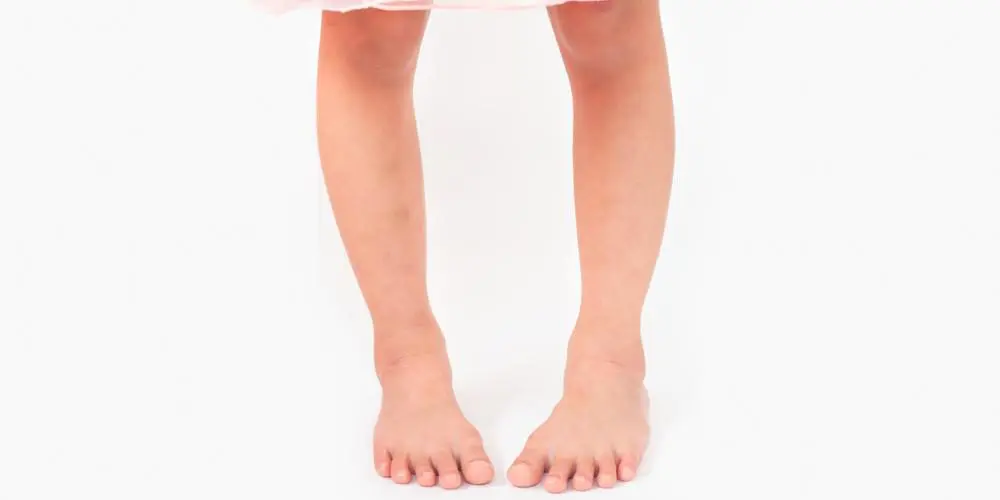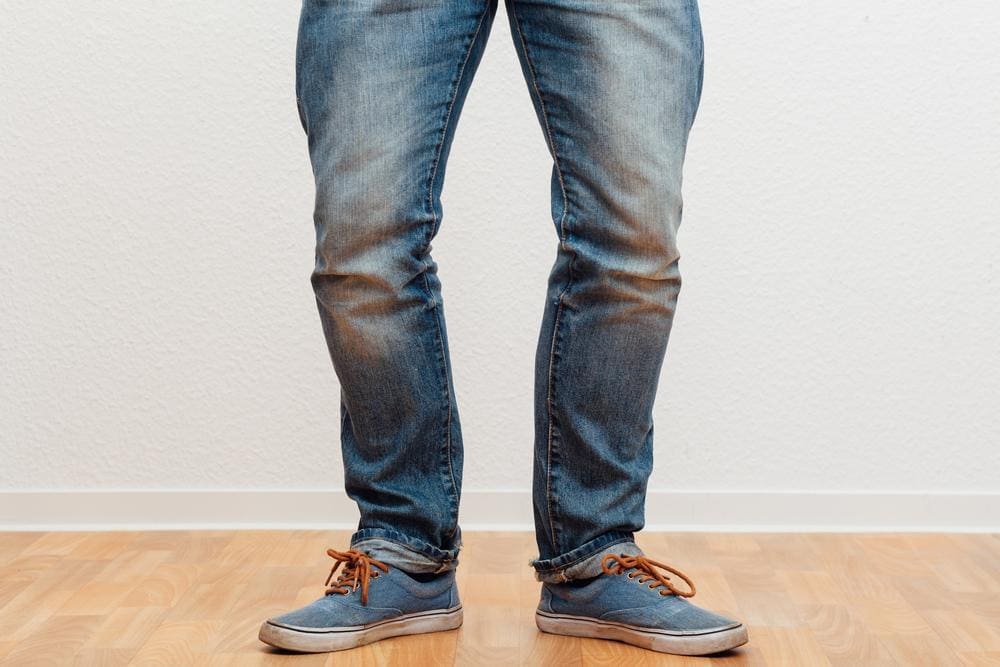
Bow legs can cause back pain, nerve pain, and difficulty exercising. Using chiropractic care for bowed legs can alleviate pain and help correct the condition.
Bowed legs develop when one or both knees bend inward, causing the ankles to be farther apart than the hips. This condition can occur in children if they do not receive sufficient amounts of vitamin D, which is necessary for calcium absorption. Chiropractic care can help treat bowed legs. Here’s what you need to know.
Bowed legs, also known as genu varum or knock knees, is a common condition in which the knees angle outward and form an angle of more than 10 degrees to the body's midline when the child stands with their feet together.
The exact causes of bowed legs are not entirely understood, but it is believed to be caused by a combination of genetic factors and environmental influences, such as being born prematurely or having low birth weight. Other risk factors include rickets, nutritional deficits, genetics, or having Down syndrome or Turner’s syndrome.
Bowed legs are generally diagnosed through physical examination and X-rays, though not all cases require special imaging to confirm the diagnosis. Treatments for bowed legs may include bed rest, bracing and physical therapy, and corrective surgery in severe cases. People who do not receive treatment for bowed legs are more likely to experience pain in the knees and a restricted range of motion over time.
Symptoms of bowed legs can vary depending on the severity of the condition. In mild cases, the child may simply have a knock knees appearance, with their ankles bending toward the outside. In more severe cases, children may experience significant pain in their legs and knees due to increased joint stress. Providing additional support for the child’s knees using braces or casts can help reduce this pain.
Some of the potential complications associated with bowed legs include:
Children with bowed legs are typically not at a higher risk for developing other orthopedic conditions, such as scoliosis or flat feet. If you suspect your child has bowed legs, consult your doctor for an accurate diagnosis and treatment plan.
There are a few different options for treating bow legs in adulthood, depending on the severity of your condition. If you only have a mild case and less than 20 degrees of angulation between your thighs, then wearing leg braces or splints might be enough to correct the alignment of your legs. You can do this as early as two years of age, and the braces will need to be worn for a few hours every day.
If your legs are more severely bow-legged and you have greater than 20 degrees of angulation between them, then surgery is probably your best bet. This is typically performed as an outpatient procedure using pins or screws to reposition your legs permanently. The recovery time for this surgery can take several weeks, so it's best to plan ahead and do some research before deciding which option is best for you.
Yes.
Most cases of bow legs are relatively mild and can be corrected with non-invasive techniques, such as exercise or braces. However, in more severe cases where the bones have become misaligned or twisted out of shape, you may require surgery to realign the bones and correct the condition.

In many cases, you can correct bow legs through exercise and braces. For example, regular stretching and strengthening exercises can help to realign the bones and correct the curvature of the legs. In more severe or persistent cases, orthopedic braces are worn.
You can straighten your bowed legs naturally in many different ways. One way is by doing exercises and stretches. You can use resistance bands or even elastic tubing, giving your muscles more strength and helping them work against the pull of gravity as you try to straighten your legs.
Yoga poses like downward dog, cobra, or tree pose can also help strengthen your muscles and give you better posture. Additionally, some people find relief from back pain if they sleep on an incline with their upper body raised.
However, to see any real improvement in the shape of your legs, you’ll need to continue these exercises and stretches over time. The sooner you start, the better your chances of seeing results.
There are many other ways that you can try to straighten your bowed legs naturally as well. Some people find relief from back pain through chiropractic adjustments, while others have great success using orthotics or shoe inserts that help redistribute their weight and improve posture over time.
Yes.
Chiropractic is a popular alternative treatment method that focuses on using spinal manipulation to treat many health conditions, including bow legs. By realigning the spine, chiropractors can improve the alignment and function of the body's musculoskeletal structure, including the legs. This can help to relieve symptoms associated with bow legs, such as pain and muscle tightness.
Chiropractors can provide effective treatment for patients with this condition by administering adjustments and other therapies that help align the joints in the body and correct the deviation in the bones. Chiropractors can treat bow legs and other conditions with a focus on finding the root causes of symptoms rather than simply treating them alone.
Chiropractic treatment for bow legs typically involves adjustments and alignment techniques that target the area where the curvature is occurring. The chiropractor performs these adjustments manually and can help align the bones in the legs so that they are no longer misaligned.
Once the alignment of the bones is corrected, patients will typically notice a reduction or elimination of their symptoms as well. Additionally, chiropractors may also recommend lifestyle changes and exercises to promote overall health and wellness as part of their treatment plan for bow legs.
There are many exercises that you can do to help correct bow legs. These range from simple stretches and leg squats to other more involved exercises. While the exact list of exercises that you should be doing will depend on your specific situation and condition, there are some basic ones that most people with this condition can benefit from:
If you or your child suffers from bowed legs, contact a chiropractor to learn what they can do to help with the condition.

© Accident Care Chiropractic | Hablamos Español
Located in: North Portland, NE Portland, SE Portland, Gresham, Clackamas, Oregon City, Hillsboro, Bethany, Beaverton, Tigard, Forest Grove, Woodburn,
McMinnville, Keizer, Salem, South Salem, Bend, Springfield, Vancouver, Hazel Dell, East Vancouver, Pasco, Kennewick, Lakewood.
We Specialize in Car Accident Treatment & Recovery
Home | About Us | Testimonials | Blog | Sitemap | Privacy Policy | Services | Locations | Contact Us